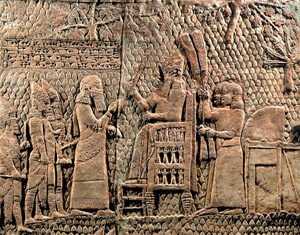Stunning new book assembles evidence of the conquest of Lachish
In the late eighth century B.C., Lachish was the second most important city in the kingdom of Judah. Only Jerusalem surpassed it.
At that time, Assyria had risen to unprecedented power, dominating the known world. On the eve of Sennacherib’s accession to the Assyrian throne in 705 B.C., the Assyrian empire extended from Elam and Babylonia on the south, to Anatolia on the north, and to the Mediterranean Sea and the border of Egypt on the west.
Each year the Assyrians expanded their kingdom by a military expedition, often commanded by the king himself. Toward the end of the eighth century, the Assyrians began deporting subjugated peoples in order to blur their national identities.
Assyrian domination of the Land of Israel—then composed of the kingdom of Israel in the north and the kingdom of Judah in the south—proceeded step by step. By 732 B.C., Assyria had annexed the northern part of the kingdom of Israel. In 721/720 B.C., Assyria conquered the city of Samaria, the capital of the northern kingdom, and annexed the rest of the kingdom of Israel, bringing a permanent end to its existence. The kingdom of Judah in the south would in all probability be the next target.
Read the rest of Destruction of Judean Fortress Portrayed in Dramatic Eighth-Century B.C. Pictures in the online Biblical Archaeology Society Library.
